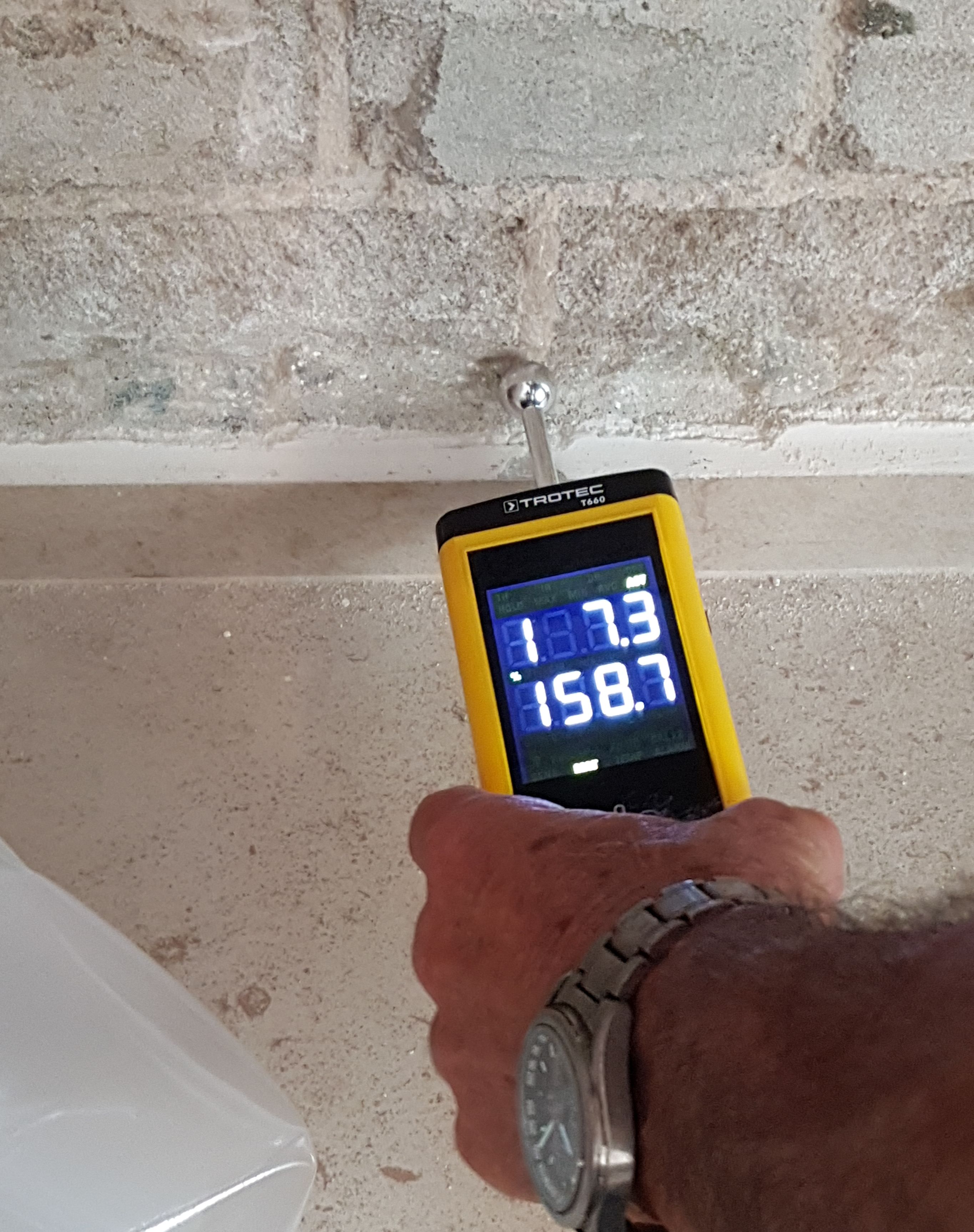Why Every Homeowner Needs a Moisture Meter: Key Advantages and Functions
Why Every Homeowner Needs a Moisture Meter: Key Advantages and Functions
Blog Article
Look Into the Globe of Moisture Meters: Everything You Required to Know
In the realm of moisture meters exists a world of precision and usefulness that usually goes undetected. These devices, while seemingly uncomplicated, hold a wide range of info that can significantly influence different industries and applications. Recognizing exactly how moisture meters operate, the various kinds available, and their varied uses can lose light on their value in guaranteeing quality and performance. By exploring the intricacies of dampness meters, one can uncover a beneficial tool that goes beyond simple dimension, providing understandings that can make a considerable difference in many fields.
How Moisture Meters Work
Moisture meters run by gauging the electrical conductivity or capacitance of materials to establish the moisture material existing. These meters are invaluable devices throughout various markets, consisting of agriculture, woodworking, and building and construction. By using various techniques such as pin-type or pinless innovation, wetness meters offer accurate analyses that help experts make notified decisions.
Pin-type dampness meters function by placing the sharp pins into the material being tested. On the various other hand, pinless dampness meters utilize electromagnetic signals to scan a larger location without creating any type of damage to the material's surface area.
No matter of the technique used, moisture meters play an important role in avoiding issues such as mold and mildew development, structural damages, or item problems triggered by excess dampness. Recognizing exactly how these meters work is essential for making certain the top quality and stability of materials in numerous applications.
Types of Moisture Meters
Given the essential duty wetness meters play in numerous markets, it is important to recognize the different kinds offered to professionals for properly examining moisture degrees - Moisture Meter. There are mainly 2 primary sorts of wetness meters: pinless and pin-type wetness meters

On the other hand, pinless dampness meters utilize electro-magnetic sensor plates to check a larger location of the product without creating any type of damage. This type is suitable for quickly scanning huge areas and is frequently used for floor covering, wall surfaces, and ceilings. Pinless meters are practical for taking analyses on finished surfaces without leaving any kind of visible marks.
Both kinds of dampness meters have their advantages and are picked based on the details requirements of the work at hand. Comprehending the distinctions between these types is crucial for experts to make precise moisture evaluations.
Applications Throughout Industries
Construction specialists depend on dampness meters to evaluate the dampness levels in structure materials like timber, drywall, and concrete, which is crucial for preserving structural stability and preventing problems like rot or mold and mildew. The flooring industry uses moisture meters to determine the dampness content in subfloors prior to mounting various flooring treatments, avoiding expensive damages due to excess wetness. In the food market, wetness meters are made use of to keep track of and manage moisture degrees in products such as grains, nuts, and dried fruits to preserve quality and top quality.
Tips for Using Wetness Meters
Use the you could try this out wetness meter's calibration settings to guarantee exact analyses when gauging the dampness web content in numerous materials. Additionally, make sure the meter is established to the proper dampness array for the product you are my sources gauging to get the most specific outcomes.
When utilizing a pin-type moisture meter, insert the pins to the appropriate deepness advised for the product being evaluated. This guarantees that the wetness analyses are drawn from the appropriate depth within the product, supplying a much more accurate depiction of its dampness material. For pinless moisture meters, bear in mind to keep appropriate contact with the product's surface area to obtain trusted analyses.
Regularly examine and replace the batteries in your moisture meter to stop incorrect analyses due to reduced power. Store the meter in a completely dry and safe place when not being used to lengthen its life-span and maintain its precision. By following these ideas, you can take full advantage of the efficiency of your moisture meter and acquire precise moisture material dimensions across different products.
Maintenance and Calibration
To make sure the precision of wetness material measurements, routine maintenance and calibration of the dampness meter are essential actions in its correct performance. Calibration changes the wetness meter to guarantee that it offers reputable and pop over to this site constant results.
Calibration ought to be performed periodically, especially if the dampness meter is made use of often or in vital applications where exact measurements are required. Several dampness meters include calibration tools or can be adjusted by expert solutions. Moisture Meter. It is suggested to maintain a log of calibration days and results to track the efficiency of the wetness meter in time. By maintaining and adjusting the wetness meter frequently, users can rely on the accuracy of the moisture web content measurements obtained.
Final Thought

To conclude, moisture meters play a vital function in numerous sectors by accurately measuring the moisture web content of materials. Understanding how these tools function, the various types available, and appropriate maintenance and calibration are important for getting reliable outcomes. Whether in manufacturing, building, or agriculture, using dampness meters aids make certain quality assurance and efficiency in processes.

In conclusion, moisture meters play a crucial duty in numerous markets by accurately measuring the dampness web content of materials.
Report this page